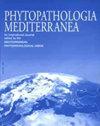影响苏丹鹰嘴豆的木犀草蛋白的分布和鉴定
IF 1.9
3区 农林科学
Q2 AGRONOMY
引用次数: 3
摘要
在苏丹,发黄病毒是脉冲作物生产的主要制约因素。进行了实地调查,以确定影响主要生产地区(Gezira计划和尼罗河州)鹰嘴豆作物的木犀病毒。在2013年、2015年和2018年的生长季节,共收集了415份有发黄和发育迟缓症状的鹰嘴豆植物样本。血清学结果(组织印迹免疫分析)显示,黄腐病毒科和鹰嘴豆绿矮病毒(CpCDV,Mastrevirus属,双子座病毒科)是最常见的病毒,很少感染蚕豆坏死黄病毒(FBNYV,Nanovirus属,Nanoviridae科)。一些样品仅与广谱路琴病毒单克隆抗体(5G4-MAb)反应,而另一些样品则显示出特异性单克隆抗体之间的交叉反应,表明出现了新的路琴病毒变体。血清学结果通过逆转录聚合酶链式反应(RT-PCR)扩增和部分外壳蛋白基因测序得到证实。分子分析为影响鹰嘴豆的四种病毒提供了基本、充分和可靠的特征,这些病毒属于脊髓灰质炎病毒科。这些病毒分别是南瓜蚜传黄病毒(CABYV)、辣椒叶脉黄病毒(PeVYV),佩波蚜传黄病毒(PABYV)和棉花卷叶矮病毒(CLRDV),它们与类型序列具有高度相似性。系统发育分析也显示与木犀病毒属物种高度相似。本研究建立了可靠、快速和灵敏的分子工具,用于检测木犀草病毒物种。本文章由计算机程序翻译,如有差异,请以英文原文为准。
Distribution and identification of luteovirids affecting chickpea in Sudan
In Sudan yellowing viruses are key production constraints in pulse crops. Field surveys were carried out to identify luteovirids affecting chickpea crops in the major production regions (Gezira Scheme and River Nile State). A total of 415 chickpea plant samples with yellowing and stunting symptoms were collected during the 2013, 2015 and 2018 growing seasons. Serological results (Tissue-blot immunoassays) showed that Luteoviridae and Chickpea chlorotic dwarf virus (CpCDV, genus Mastrevirus, family Geminiviridae) were the most common viruses, with rare infections with Faba bean necrotic yellows virus (FBNYV, genus Nanovirus, family Nanoviridae). Some samples reacted only with a broad-spectrum luteovirid monoclonal antibody (5G4-MAb), and others showed cross reactions between the specific monoclonal antibodies, suggesting the occurrence of new luteovirid variants. Serological results were confirmed by amplification with reverse transcription-polymerase chain reaction (RT-PCR) and sequencing of the partial coat protein gene. Molecular analyses provided a basic, sufficient and reliable characterization for four viruses affecting chickpea that belong to Polerovirus (family Luteoviridae). These were Cucurbit aphid-borne yellows virus (CABYV), Pepper vein yellows virus (PeVYV), Pepo aphid-borne yellows virus (PABYV) and Cotton leafroll dwarf virus (CLRDV), that shared high similarity with the type sequences. Phylogenetic analyses also revealed high similarity to luteovirid species. This study has established reliable, rapid and sensitive molecular tools for the detection of luteovirid species.
求助全文
通过发布文献求助,成功后即可免费获取论文全文。
去求助
来源期刊

Phytopathologia Mediterranea
生物-植物科学
CiteScore
4.40
自引率
8.30%
发文量
28
审稿时长
6-12 weeks
期刊介绍:
Phytopathologia Mediterranea is an international journal edited by the Mediterranean Phytopathological Union. The journal’s mission is the promotion of plant health for Mediterranean crops, climate and regions, safe food production, and the transfer of new knowledge on plant diseases and their sustainable management.
The journal deals with all areas of plant pathology, including etiology, epidemiology, disease control, biochemical and physiological aspects, and utilization of molecular technologies. All types of plant pathogens are covered, including fungi, oomycetes, nematodes, protozoa, bacteria, phytoplasmas, viruses, and viroids. The journal also gives a special attention to research on mycotoxins, biological and integrated management of plant diseases, and the use of natural substances in disease and weed control. The journal focuses on pathology of Mediterranean crops grown throughout the world.
The Editorial Board of Phytopathologia Mediterranea has recently been reorganised, under two Editors-in-Chief and with an increased number of editors.
 求助内容:
求助内容: 应助结果提醒方式:
应助结果提醒方式:


